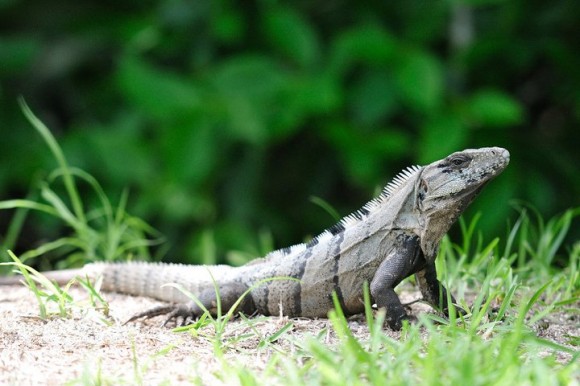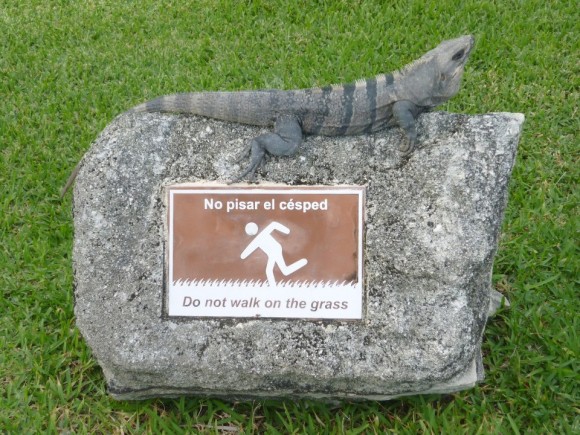The wildlife of the Riviera Maya and its environment XV

English: Black spiny-tailed iguana
Scientific: Ctenosaura similis Gray
Maaya t’aan: Juuj, T’ol juuj
Description: This is the largest lizard found in our area, males reaching length of 1.5 meters (almost five feet), and females one meter (3.2 feet). At birth they are grey in color, changing to green over a few months’ time; by six months they have their adult coloration, brown and grey with black stripes. While juveniles feed on insects, adults primarily consume plants, including flowers.
Among themselves, adult males are highly aggressive; they are of no danger to humans, however, unless they are touched, threatened or cornered. Feeding them is highly discouraged, as they can inflict serious bites, which while unintentional, can be highly painful and disfiguring. They are fast runners, attaining speeds of up to 35 kilometers (about 21.7 miles) per hour.
Habitat: They inhabit coastal forests, leaving by day for open areas, including the dunes, where they warm themselves in the sun and hunt for food. They are strong tree climbers, but are often found hiding in the spaces between rocks, near the dune, in rocky areas, in stone walls, and in plies of construction rubbish.
Threats: Hunting; collisions with vehicles; predation by pets
Uses and beliefs: It is believed that they have been an important source of nutrition since prehistoric times. They are hunted here and in all parts of the Mexican Republic where they are found, even though they are protected under federal law.
How to protect it: Do not hunt these creatures, or purchase or consume products made from their meat or skin. When driving, give them a chance to get out of the way, to avoid hitting them. Do not feed them.
Where to observe it: Along the edges of forested areas; among the rocks on the dunes.






